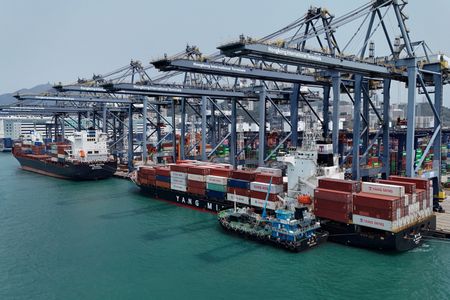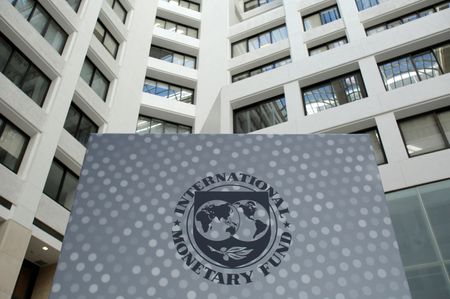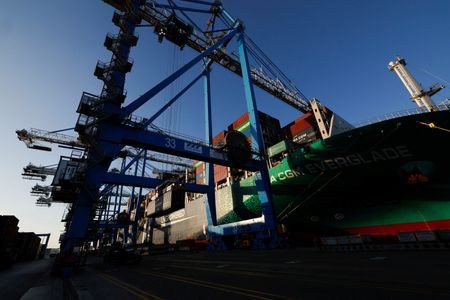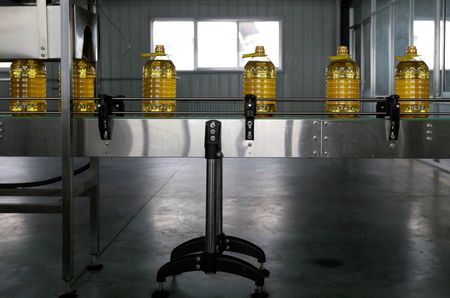(Reuters) -U.S. President Donald Trump’s tariff decisions since he took office on January 20 have shocked financial markets and sent a wave of uncertainty through the global economy.
Here is a timeline of the major developments:
February 1 – Trump imposes 25% tariffs on Mexican and most Canadian imports and 10% on goods from China, demanding they curb the flow of fentanyl and illegal immigrants into the U.S.
February 3 – Trump agrees to a 30-day pause in his tariff threat on Mexico and Canada in return for concessions on border and crime enforcement. The U.S. does not reach such a deal with China.
February 10 – Trump raises tariffs on steel and aluminum to a flat 25% “without exceptions or exemptions”.
March 3 – Trump says 25% tariffs on goods from Mexico and Canada will take effect from March 4 and doubles fentanyl-related tariffs on all Chinese imports to 20%.
March 6 – Trump exempts goods from Canada and Mexico under a North American trade pact for a month.
March 26 – Trump unveils a 25% tariff on imported cars and light trucks.
April 2 – Trump announces global tariffs with a baseline of 10% across all imports and significantly higher duties on some of the United States’ biggest trading partners.
April 9 – Trump pauses for 90 days most of his country-specific tariffs that kicked in less than 24 hours earlier after an upheaval in financial markets erased trillions of dollars from bourses around the world.
The 10% blanket duty on almost all U.S. imports stays in place.
Trump says he will raise the tariff on Chinese imports to 125% from the 104% level that took effect a day earlier. This pushes the extra duties on Chinese goods to 145%, including the previously imposed tariffs.
May 9 – Trump and British Prime Minister Keir Starmer announce a limited bilateral trade agreement that leaves in place 10% tariffs on British exports and lowers U.S. duties on British car exports.
May 12 – The U.S. and China agree to temporarily slash reciprocal tariffs. Under the 90-day truce, the U.S. will cut the extra tariffs it imposed on Chinese imports to 30% from 145%, while China’s duties on U.S. imports will be slashed to 10% from 125%.
May 13 – The U.S. cuts the low value “de minimis” tariff on China shipments, reducing duties for items valued at up to $800 to 54% from 120%.
May 23 – Trump says he is recommending a straight 50% tariff on goods from the European Union starting on June 1. He backpedals on this threat two days later.
He also warns Apple it would face a 25% tariff if phones it sold in the U.S. were manufactured outside of the country.
May 29 – A federal appeals court temporarily reinstates the most sweeping of Trump’s tariffs, pausing an earlier lower court’s ruling to consider the government’s appeal.
June 3 – Trump signs an executive proclamation activating a hike in the steel and aluminum tariffs to 50% from 25%.
July 3 – Trump says the U.S. will place a 20% tariff on many Vietnamese exports, with trans-shipments from third countries through Vietnam facing a 40% levy.
July 6 – Trump says on Truth Social that countries aligning themselves with the “Anti-American policies” of BRICS will be charged an additional 10% tariff.
July 7 – Trump says on Truth Social the additional higher duties announced in earlier months will kick in on August 1. In letters sent to 14 countries including Japan, South Korea and Serbia, he says that will include tariffs between 25% and 40%.
July 10 – Trump says the U.S. will impose a 35% tariff on imports from Canada in August and plans to impose blanket tariffs of 15% or 20% on most other trading partners.
July 12 – Trump threatens to impose a 30% tariff on imports from Mexico and the EU from August 1.
July 15 – Trump says the U.S. will impose a 19% tariff on goods from Indonesia under a new agreement.
July 22 – Trump strikes a trade deal with Japan that includes lowering tariffs on auto imports to 15%.
July 27 – The U.S. reaches a trade agreement with the European Union, imposing a 15% import tariff on most EU goods.
July 28 – Trump says most trading partners that do not negotiate separate trade deals would soon face tariffs of 15% to 20%.
(Compiled by Paolo Laudani and Mateusz Rabiega in Gdansk; editing by Jamie Freed, Lincoln Feast, Matt Scuffham and Milla Nissi-Prussak)











